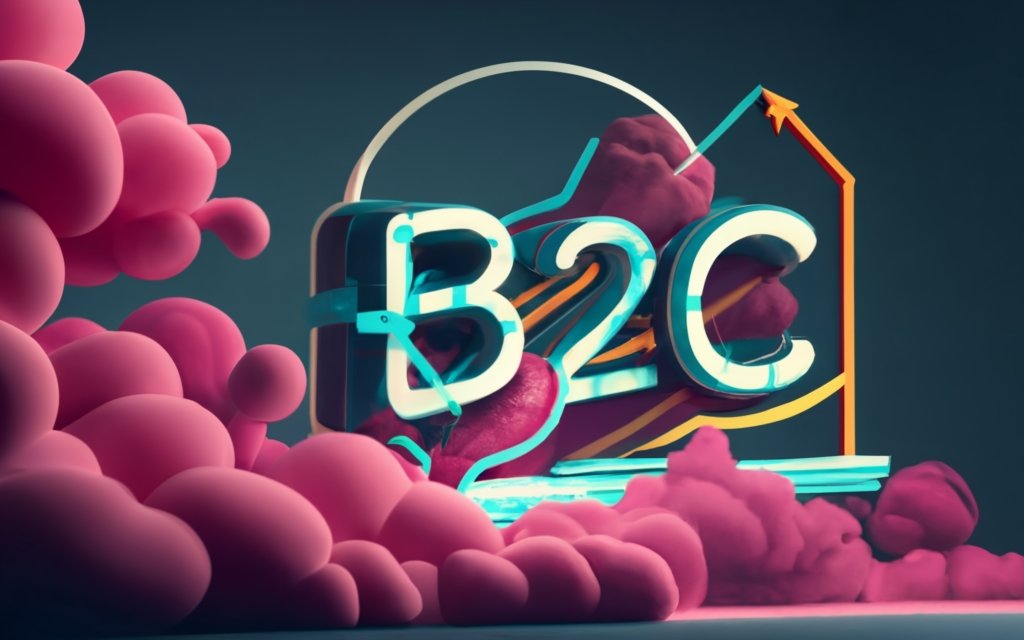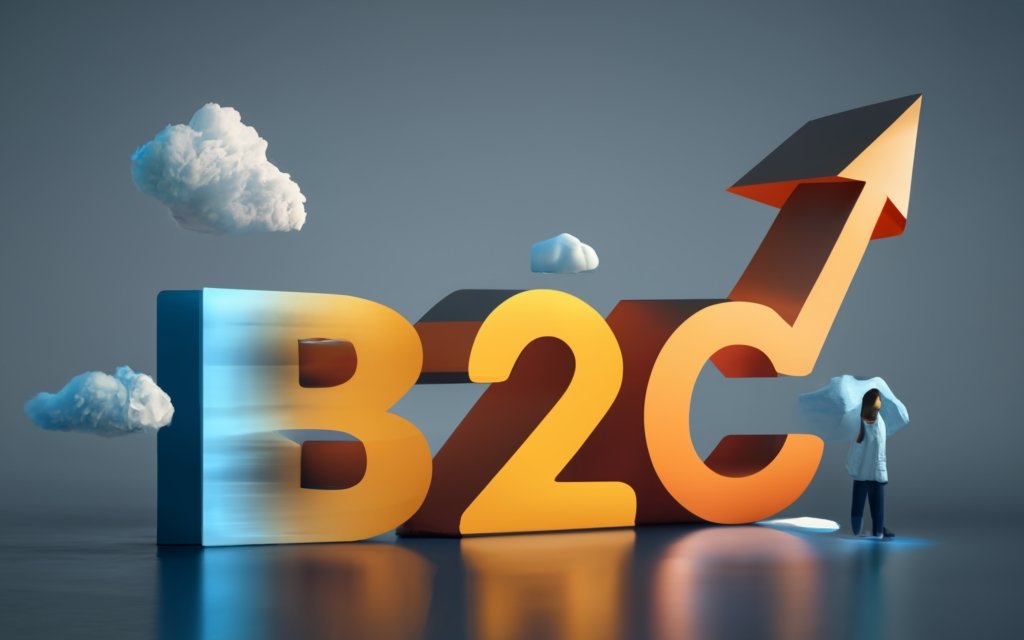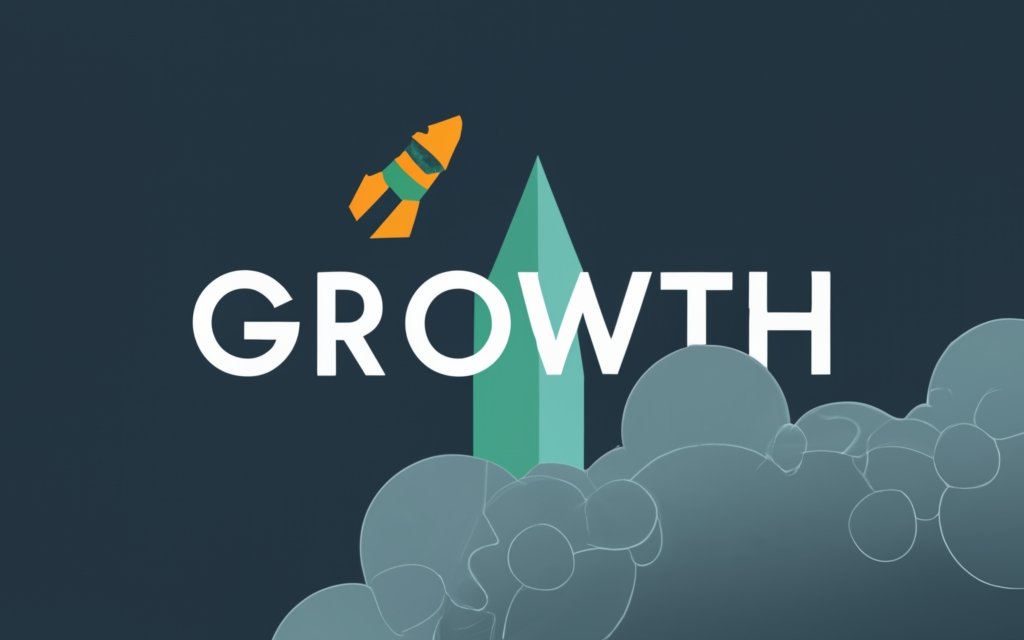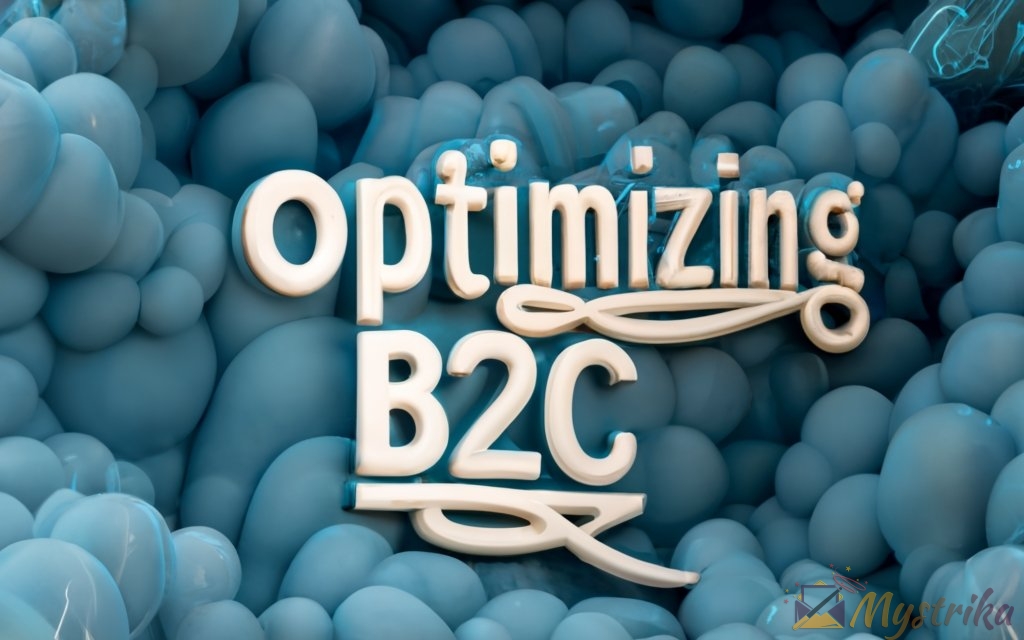Does your B2C marketing strategy align with how modern buyers actually make decisions? Understanding the buyer’s journey is crucial for guiding customers seamlessly from awareness to revenue.
This comprehensive guide explores the key stages, content mapping, optimization tactics, metrics to track, and experiments to run that will transform your customer acquisition and experience. Follow our data-driven framework to maximize lifetime value and gain a competitive edge.
Understanding the B2C Buyer’s Journey Stages
The B2C buyer’s journey can be broken down into three key stages: awareness, consideration, and decision. Understanding where customers are in their journey is crucial for providing the right content and messaging to guide them along the path to purchase. Let’s explore each stage in more detail:
The Awareness Stage – Making Customers Aware of Their Problem
The awareness stage is when potential customers realize they have a problem or need but don’t know how to articulate it yet. Your goal here is to help them identify their pain points so they understand the value of finding a solution.
Identifying Pain Points and Opportunities Through Market Research
Conduct surveys, interviews, and focus groups to uncover your audience’s challenges. Ask questions like:
- What difficulties do you encounter in [situation X]?
- How satisfied are you with [existing solutions]?
- What would your ideal solution for [problem Y] look like?
Look for common themes in their responses to identify major pain points.
Using Social Listening to Understand Needs and Interests
Monitor social platforms and community forums to see what your audience is complaining about. Look for common questions they are asking for clues about their problems. Pay attention to keywords and hashtags related to your industry.
Running Brand Awareness Campaigns Across Multiple Channels
Use Google and social ads to promote helpful resources like videos, quizzes, and blog posts that provide value without pitching your product. These indirectly highlight the problem your brand solves. Retarget visitors with ads focused on your solution.
The Consideration Stage – Presenting Your Solution
Now that you’ve made them “problem aware”, guide customers to thinking of you as a potential solution. Provide useful information and opportunities to experience your offering.
Creating Educational Resources Like Ebooks, Infographics, and Webinars
Develop content that dives deeper into their challenges and positions your product as the ideal solution. Include tips, actionable steps, and industry expertise.
Offering Free Trials, Demos, and Samples
Allowing customers to try before they buy is powerful at this evaluative stage. Provide limited but generous samples so they understand the value you provide.
Using Retargeting Ads to Bring Visitors Back
If someone visited your website but didn’t convert, remarket to them through ads on social media, Google, and relevant websites. Refresh your brand and offers in their minds.
Providing Social Proof Through Customer Testimonials and Case Studies
Reduce potential customers’ uncertainty by showcasing satisfied buyers and specific examples of how you solved problems for them.
The Decision Stage – Helping Customers Choose Your Product
Here the customer decides whether to purchase from you or a competitor. Ensure it’s a frictionless process and continue nurturing the relationship.
Simplifying the Transaction Process for Easy Purchasing
Remove any obstacles between desire and the final purchase. Offer guest checkout, save payment details, provide multiple payment options, and make returns easy.
Addressing Common Questions and Hesitations
Make FAQs readily available. Have chatbots or live chat to immediately answer concerns. Follow up on any objections raised during one-on-one conversations.
Offering Special Discounts and Promotions
Incentivize customers who are ready to buy with coupons, percentage-off deals, bundled pricing, or flash sales events to nudge them off the fence.
Following Up Quickly After Interactions
Speed builds trust and keeps you top of mind. Send personalized email follow-ups if someone inquires about your product or browses your website to continue the conversation.
Mapping your messaging and offers to these buying stages ensures you are providing maximum value when it matters most. Now let’s look at how to deliver the right content for each phase.

Mapping Content Types to Each Stage of the Journey
Now that we’ve covered the buyer’s journey stages, let’s discuss the types of content that work best for each phase. Aligning content to the customer’s mindset at different points maximizes relevance and conversion potential.
Top of Funnel Content – Blogs, Social Posts, Videos
When customers are just becoming aware of their problem in the early stage, top-of-funnel (TOFU) content works best. This content focuses on education and thought leadership, not selling.
Blogs
Blog articles are an ideal TOFU content type. Write posts that target informational queries and answers common questions from your buyer personas. Focus on providing value by explaining concepts, trends, and best practices.
Examples:
- “5 Reasons You Should Start a Wellness Routine in 2023”
- “How Often Should You Work Out? Fitness Frequency Guide”
Social Media Posts
Share your blog posts as well as other helpful resources on social media. Short tips and tricks that solve pain points perform well. Polls and questions can also stimulate engagement.
Examples:
- “Stuck in a fitness rut? 😕 Here are 5 workout ideas to refresh your routine 💪”
- “What’s your top barrier to working out regularly?” [poll]
Videos
Educational and inspirational videos nurture awareness stage buyers. Create “how-to” tutorials, vlogs of your process, interviews with experts, platform walkthroughs, and videos that answer common customer questions.
Middle of Funnel Content – Ebooks, Webinars, Product Comparisons
In the consideration phase, you need content that compares solutions, establishes your expertise, and convinces the customer to consider you.
Ebooks
Ebooks or guides go deeper into buyers’ problems and position your solution as the ideal fix. Outline the issue, provide tips and steps to overcome it, and weave in your offerings.
Example:
- How to Start an Exercise Routine and Stick to It: Complete 20-Step Guide
Webinars
Hosting a webinar allows you to demonstrate thought leadership and deliver value through training and Q&As. Include a slide presenting your product as a preferred solution.
Example:
- “Fitness Over 50: How Mature Adults Can Stay Active and Healthy”
Product Comparisons
Compare your product with competitors in a table or article. Focus on why your solution outperforms others based on criteria important to the buyer, like cost or features.
Bottom of Funnel Content – Free Trials, Case Studies, Promotions
When customers evaluate final purchase decisions, use BOTFOM (bottom-of-funnel) content to close sales.
Free Trials
Offering free access to your product is highly effective at this stage. Let customers experience the value you provide firsthand on a limited basis.
Case Studies
Share specific customer stories showcasing how your product solved problems for people similar to the buyer. Quantify the improvements experienced.
Example:
- “How Switching to X Gym Helped Amanda Lose 30 Pounds in 3 Months”
Promotions
Run special offers like percentage discounts, bundled pricing, flash sales, and coupons to incentivize buyers ready to purchase. Deals give them a reason to act now.
Aligning your content format to the customer’s mindset and goals at each stage makes your messaging more impactful. Now let’s optimize the post-purchase experience.

Optimizing the Customer Experience During and After Purchase
The buyer’s journey doesn’t end when customers hand over payment. Their post-purchase interactions impact customer retention, repeat sales, referrals, and brand reputation. Here’s how to wow them after the sale.
Providing Excellent Customer Support and Service
Customer service is crucial for positive post-purchase experiences. Make it easy for customers to get help and resolve issues.
Offer Omnichannel Support
Give customers choice in how they reach you – live chat, phone, email, social media, in-app messaging. Staff appropriately to minimize wait times.
Empower Support Agents
Ensure agents have access to customer history and can handle requests without escalation. Cross-train them on both technical troubleshooting and soft skills like empathy.
Streamline Help Resources
Reduce reliance on support staff by having robust self-service help resources. Maintain comprehensive knowledge bases, FAQs, forums, and documentation.
Set KPIs Around CSAT
Measure customer satisfaction (CSAT) with support interactions. Set targets for CSAT scores and time-to-resolution. Track these KPIs to improve processes.
Make Returns/Refunds Easy
Have flexible return policies and make the process simple for customers. Provide prepaid return shipping labels and instant refunds upon item receipt.
Asking for Product Reviews and Customer Feedback
Product reviews and customer feedback are invaluable for improving your offerings and experiences. Proactively collect this data.
Send Post-Purchase Surveys
Send email surveys after a customer makes their first purchase asking about their experience. Be sure to ask:
- How satisfied are you with your purchase?
- How can we improve our buying process?
- Would you recommend our product to colleagues and friends?
Request App/Website Reviews
Place polite review requests at logical times, like after customer service issues are resolved, during onboarding, or after positive interactions.
Monitor Reviews
Regularly check review sites and social media for feedback. Reach out directly to both positive and negative reviewers to open a dialogue.
Hold Focus Groups
Gather groups of customers to test new product concepts or get input on improving your business. Offer incentives to participate.
Track Net Promoter Score
Survey customers on their likelihood to recommend you on a 0-10 scale. Track this metric over time as an indicator of experience.
Developing Loyalty Programs to Incentivize Repeat Purchases
Loyalty programs reward repeat customers and gently nudge one-time buyers to return.
Implement VIP Tiers
Structure your program around spending tiers that offer progressively better perks and discounts for your best customers.
Offer Special Promos
Loyalty members get first access to sales or special offers like bonus product giveaways or exclusive flavors/items.
Provide Free Shipping
One of the simplest yet effective loyalty benefits is free shipping. Consider free expedited shipping for your highest tiers.
Give Early Access
Give loyal customers first dibs on new product launches, new content, event tickets, or appointment bookings.
Remember Loyalty Members
Acknowledge membership with special birthday/loyalty anniversary gifts or personal email check-ins to delight customers.
Make It Easy to Redeem
Allow members to accumulate and redeem points online or in-app for rewards. More convenience drives engagement.
Creating User Communities to Foster Engagement
Communities satisfy customers’ desire to connect with those who share their interests, needs, and experiences with your brand.
Start a User Forum
Forums allow customers to ask questions and get advice from fellow customers. They can build hype for product releases and feature requests.
Host Live Events
Organize pop-up dinners, classes, conferences, and parties to bring your community together face-to-face for memorable experiences.
Run Social Contests
Encourage social sharing around your brand and products. Contests, giveaways, polls, and hashtags drive participation.
Create a Loyalty Facebook Group
Build a “VIP lounge” for your highest-tier loyalty members to mingle. They’ll feel valued and strengthen bonds with you and each other.
Curate User-Generated Content
Repost great social content from customers on your own accounts. Seeing themselves featured keeps them engaged.
Building these types of experiences deepens post-purchase satisfaction and emotionally bonds customers to your brand, leading to lifetime value.

Tracking Key Metrics at Each Stage of the Journey
To optimize the buyer’s journey, you need data. Here are the key metrics to monitor at each stage so you can understand effectiveness and pinpoint areas for improvement.
Traffic Sources and Website Visits
Analyzing traffic tells you how well your content is performing for attracting each buyer stage.
Monitor Source/Medium
Track where your website traffic is coming from – organic search, social media, paid ads, referrals, etc. This reveals your top acquisition channels.
Review Landing Pages
See which landing pages receive the most entrances. This shows if stage-specific pages (like product, resources, or blog) get traction.
Analyze Keyword Data
For organic and paid search, identify which keywords and queries drive visits. This helps refine targeting for different journey stages.
Check Bounce Rates
High bounce rates indicate content doesn’t resonate. Review bounce rates for your stage-specific pages to identify weak points.
Evaluate Time on Site
Longer time on site typically signals engaged visitors. Look for higher averages on pages aligned to each stage.
Lead and Sales Conversion Rates
These metrics demonstrate how well you move visitors into and through your sales funnel.
Lead Capture Rates
Calculate the % of site visitors that convert to leads via form fills or downloads. Improving this pushes visitors into the consideration phase.
Demo/Trial Sign-Up Rates
Measure how many leads progress to product demos or free trials. Look at signup rates by lead source to focus outreach.
Sales Conversion Rates
Track both lead-to-customer % and visitor-to-customer % to quantify sales funnel fallout between stages.
Customer Acquisition Costs (CAC)
Determine your average CAC by marketing channel and lead source. Identify your most efficient sources of buyer stage leads.
Customer Lifetime Value and Retention Rates
These metrics demonstrate the long-term value of customers from each source and how loyal they remain post-purchase.
Measure Lifetime Value
Calculate lifetime value for customers from each lead source and buyer stage. Identify your most valuable origin sources.
Calculate Retention Rates
Determine the % of customers retained over time – monthly, quarterly, and annually. High loyalty equals higher LTV.
Review Churn Drivers
Survey exiting customers on their reasons for churning. Pinpoint customer experience weak points causing excessive churn.
Analyze Repeat Purchase Rates
Track the % of customers that return for additional purchases vs. one-time buys. Aim to increase repeat purchase frequency.
Customer Satisfaction and Net Promoter Scores
These survey-based metrics provide broad insights into post-purchase sentiment and brand loyalty.
Monitor Satisfaction Surveys
Frequently survey buyers on their satisfaction with your product, service, and overall experience. High satisfaction boosts retention and repeat sales.
Calculate Net Promoter Score
Measure brand loyalty with NPS surveys. Identify both promoters and detractors to highlight strengths vs. weaknesses.
Segment by Buyer Stage
View survey scores for each buyer stage – awareness leads vs. consideration vs. decision stage. See where dissatisfaction creeps in.
Set Goals Around Improvement
Establish targets for boosting satisfaction, NPS, and other experience metrics. Continually monitor progress toward goals.
Regularly tracking KPIs aligned to each buyer journey stage helps you base optimization decisions on hard data rather than assumptions. Now let’s discuss how to iterate based on those insights.
Continuously Improving Through Testing and Experimentation
Optimizing the buyer’s journey is an ongoing process. Leverage testing and experiments to constantly refine your personas, content, channels, and tactics.
A/B Testing Content Types and Offers
A/B test different pieces of content to see what resonates most with each buyer stage.
Test Headlines
Craft multiple headlines for a blog post or email. Send them out to segments of your audience and track open rates to identify what works.
Test Content Formats
Take a piece of content and produce it in different formats – infographic vs. guide vs. video. See which best engages each stage.
Test Calls-to-Action (CTAs)
Change the wording and design of CTAs and buttons on key pages. Track CTRs to optimize conversion through your funnel.
Test Landing Pages
Create different versions of a landing page with layout, copy, images, offers, etc. See which variant converts visitors best.
Test Email Subjects/Content
Send different email subject lines and content to sample subscriber segments. See which emails get more opens, clicks, and replies.
Optimizing Channel Mix Based on Performance Data
Look at your analytics to identify the best channels for reaching each buyer stage and shift budget accordingly.
Evaluate Traffic Sources
See which channels drive the most website visits from cold audiences vs. existing contacts. Double down on channel budgets that attract ideal stages.
Assess Channel ROI
Calculate your CAC and ROAS across channels. Increase spending on those producing leads and sales most efficiently.
Refine Ad Targeting
Use audience insights and keyword data to tighten your targeting for paid ads. Reduce spend on segments less likely to convert.
Align Channels to Journey Stage
Look at conversion rates by channel for your offers. Promote trials and demos on your channels with the most consideration stage buyers.
Cultivate Review Sites
See where you get the most website referrals from and focus on building relationships with reviewers in those communities.
Iterating on Buyer Personas and Journey Maps
Use insights from your metrics and customer interactions to refine your personas and mapped buyer’s journey.
Update Persona Demographics
Look at sales data and first-party research to update personas with the attributes of your best customers.
Add New Personas
If analytics show new buyer clusters emerging, create additional personas to address their specific needs in your content.
Reflect New Behaviors
Interview sales reps and support agents on buyer behavior changes they see. Evolve journeys to reflect new preferences.
Map Friction Points
Survey customers on pain points encountered when buying. Update journey maps to resolve identified sticking points.
Track Emerging Channels
Monitor shifts in traffic channels and add new prospect touchpoints to your maps as usage changes over time.
Trying New Marketing Strategies and Analyzing Results
Run small experiments to test promising new strategies to drive awareness, consideration, and decisions.
Experiment with Quizzes
Run a quiz-style ad campaign targeting cold audiences. See if it raises more awareness than generic promotional ads.
Test New Nurturing Tactics
Pick a small segment and apply new nurturing sequences or content offers. See if it moves more leads to sales than your standard approach.
Sample New Loyalty Rewards
Offer a small test group special membership rewards not offered to all loyalty members. Gauge if it drives higher retention rates.
Pilot SMS/Direct Mail Nurturing
Send a limited direct mail or SMS nurturing sequence to cold leads. Check if it produces higher conversion rates than email alone.
Try Emerging Social Platforms
Run small test campaigns leveraging newer social platforms like TikTok. See if you can effectively reach new buyer personas.
Adopting a culture of constant testing will help you stay agile, leverage new trends and tactics quicker, and build a more holistic view of your optimal buyer’s journey.
Key Takeaways
Optimizing the B2C buyer’s journey is crucial for business growth and requires a strategic approach. Here are the key takeaways:
- Understand your audience and map content to the three stages of awareness, consideration and decision. Meet their needs at each phase.
- Develop educational resources for the awareness stage to highlight customer pain points. Offer trials, demos and comparisons in the consideration stage. Provide incentives and social proof for the decision stage.
- Align messaging and content formats to each stage of the journey for maximum relevance. Top-of-funnel content builds awareness. Mid-funnel nurtures consideration. Bottom-funnel closes sales.
- The post-purchase experience is just as important. Provide excellent customer service and request feedback to boost satisfaction and loyalty after the sale.
- Track buyer journey metrics like website traffic sources, conversion rates and customer LTV. Use insights to refine your personas, content and channels.
- Continuously test and experiment with campaigns, offers and tactics. Paired with data, this will reveal optimization opportunities over time as buyer behavior evolves.
- Adopting an agile, customer-centric approach maximizes lifetime value and fosters lasting brand affinity with each B2C buyer. Here are some frequently asked questions for the B2C buyer’s journey article:
Frequently Asked Questions
Q: How many stages are in the typical B2C buyer’s journey?
A: The B2C buyer’s journey can be broken down into three core stages – awareness, consideration, and decision. However, some models also include post-purchase stages for retention and loyalty.
Q: How can you identify your audience’s pain points in the awareness stage?
A: Use market research, social listening, surveys, and analytics to uncover the problems your audience is experiencing. Directly engage them in interviews or focus groups. Monitor forums and social media for common complaints and questions.
Q: What types of content work best in the consideration stage?
A: Educational content like ebooks, guides, and webinars that position your product as the solution work well. Also provide free trials, demos, samples, and case studies to showcase value.
Q: How do you create compelling offers for the decision stage?
A: Discounts, coupons, bundle pricing, flash sales, and other special promotions can help motivate buyers who are ready to purchase. Also emphasize free shipping and returns to reduce friction.
Q: How can you optimize the post-purchase experience?
A: Provide excellent and omnichannel customer service. Request product reviews and customer feedback to fuel improvement. Develop loyalty programs with special perks, tiers, and rewards. Foster online communities.
Q: What metrics should you track for the buyer’s journey?
A: Important metrics include traffic source, time on site, lead and sales conversion rates, customer lifetime value, retention rate, customer satisfaction scores, Net Promoter Score, and more.
Q: How can testing and experiments help optimization?
A: A/B test content offers and landing pages. Analyze performance by channel and shift budgets to those working best. Regularly iterate on buyer personas and journey maps based on insights.
Q: How often should you refresh your buyer persona profiles?
A: Review your buyer personas every 6-12 months. Sales data, customer research, and market trends will reveal demographic shifts, new behaviors, and emerging needs to address.

